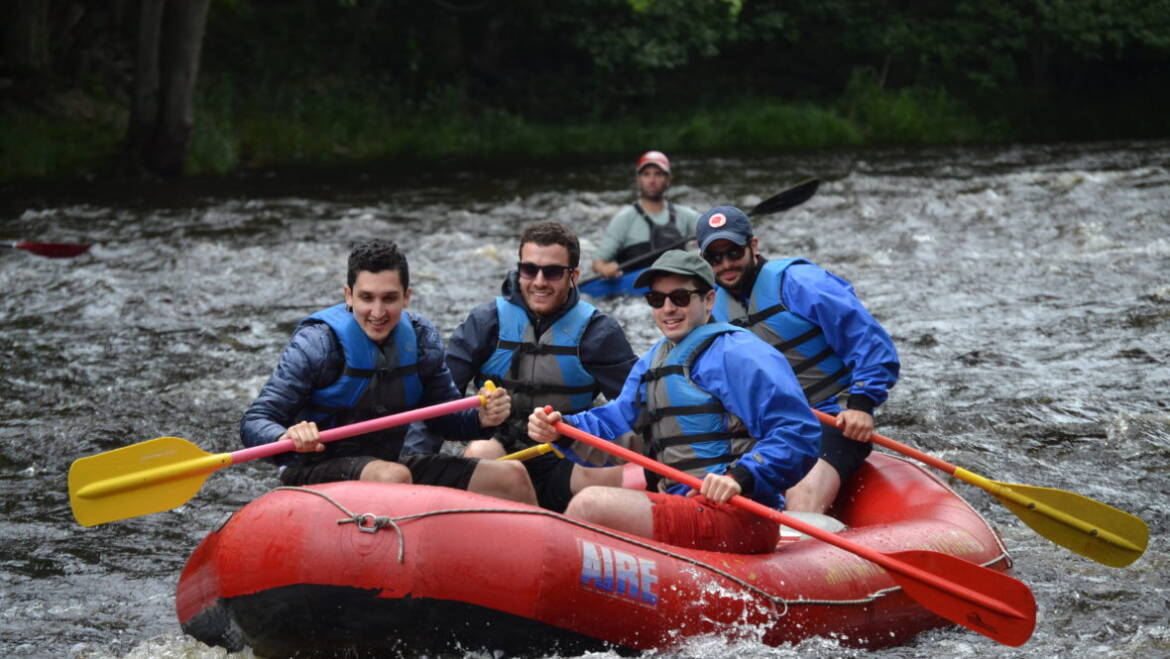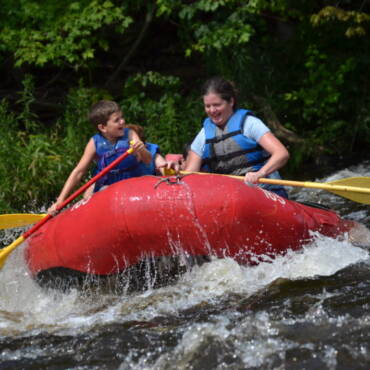If you’re new to whitewater rafting, the first thing you’ll need to learn is how to paddle. Here are some tips from the pros on proper paddling techniques for whitewater rafting. The good news is that paddling is simple. The best place is to start is by determining how to position your hands.
Hand Placement and Grip for Paddling
On the opposite end of the paddle from the flat “paddle” portion, you will find what is known as a T-grip. Named because it is shaped like a capital ‘T.’ Place one hand over the top of the T-grip with your thumb wrapped around the bottom. Place your other hand approximately halfway down the shaft of the paddle. Safety tip: always keep your hand on the T-grip. If you place both hands along the shaft of the paddle, the T-grip will be more likely to knock into other people in the raft. Placing both hands along the shaft will also result in a less productive stroke.
Fluidity & Balance
Now that your hands are positioned correctly, let’s move on to pushing a paddle through the water. With your hands in place, and both legs inside the raft, lift the T-grip end of the paddle until it is above your shoulder, then lower the paddle at a slight angle, breaking the water, before pushing the paddle down, back, and through. When every person in a raft is repeating this motion, it will propel the raft forward. If the paddlers on one side of the raft are exerting more force than the paddlers on the other, the raft will veer to the right or to the left. In certain circumstances, paddling like this is a great way to avoid obstacles, or stay on course.
Back paddling, which will enable the raft to move backward or slow down, is accomplished by dropping a blade into the water at an opposite angle to your front stroke, and then pushing the water ahead, as opposed to pushing it toward the rear.
It’s important to remember that an even, smooth stroke is more efficient than a violent, hard stroke. And paddle as a team with the same length and strength in your blade strokes.
A Couple of Minor Strokes for the Raft Captain
In addition to the basic paddling technique, here are two common strokes that can help you steer a raft more effectively:
- The Draw Stroke: This stroke is used to maneuver a raft in a particular direction. The basic motion involves anchoring a paddle vertically in the water with its blade facing you (parallel to the raft). Once the paddle is standing upright, with its blade and shaft submerged, use the anchor point for leverage so you can pull the raft in the direction of the paddle.
- The Sweep Stroke: A sweep enables a raft to initiate a spin or a sharp turn, and it is particularly helpful in rough currents. The sweep is performed by sitting in the back of a raft and holding the paddle out horizontally with its blade breaking the water. Using your core muscles, grip the paddle, exerting force against the current. This will force the raft to rotate in a circular motion.
We hope you found these tips paddling techniques helpful! They will come in handy during your next whitewater rafting trip with Whitewater Challengers. Of course our professional river guides always start each rafting trip with instructions and demonstrations on how to paddle along with some safety tips you will need to know. Book a trip today or explore our rafting options.




Add Your Comment